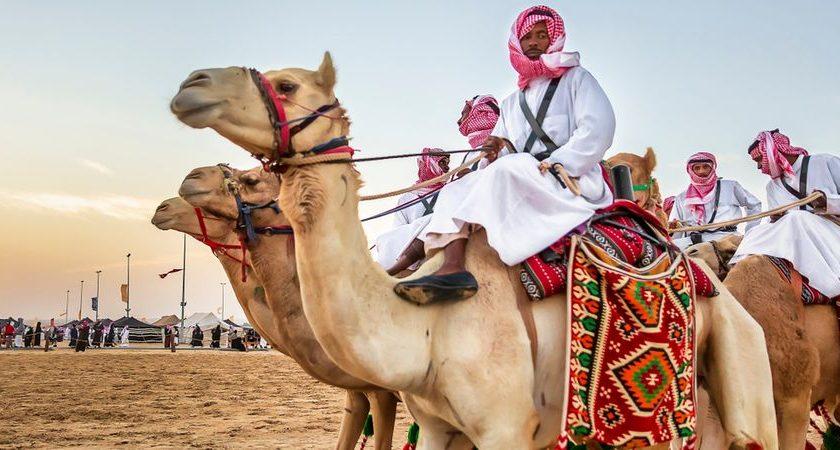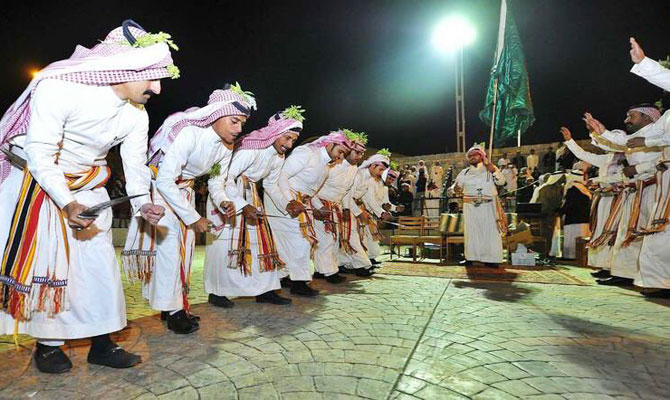The Traditional Saudi Arabia Lifestyle is deeply rooted in Islamic values, Bedouin heritage, and centuries-old customs that continue to influence modern life in the Kingdom. While Saudi Arabia is rapidly developing and modernizing, its traditions remain strong and widely practiced in daily routines, clothing, social norms, and celebrations. This article takes a closer look at the most captivating aspects of the Traditional Saudi Arabia Lifestyle and how it reflects the heart of the nation’s culture.
1. Family Is the Center of All Aspects of Life

In the Traditional Saudi Arabia Lifestyle, family is the foundation of society. Saudi families tend to be large, and extended families often live near each other or even within the same household. Respect for elders is deeply embedded in the culture, and decisions—both personal and professional—are often made after consulting senior family members.
Men and women traditionally have distinct roles within the family structure. Men are usually the primary providers, while women manage the household and raise children. However, over time, women’s roles in education and employment have been evolving, even while traditional values are still respected.
Gatherings and meals are important family bonding moments. It is common for families to come together every week, especially on Fridays, for a shared meal after Jumu’ah (Friday prayer). These gatherings promote unity and cultural continuity.
2. Modest Traditional Clothing Reflects Cultural Values
One of the most recognizable elements of the Traditional Saudi Arabia Lifestyle is its distinctive dress. For men, the standard attire is the thobe or dishdasha, a long white robe, often worn with a head covering called ghutra or shemagh held in place by a black cord known as agal.
Women traditionally wear the abaya, a long black cloak, often paired with a headscarf called hijab. In more conservative regions, women may also wear the niqab, a face veil that leaves only the eyes visible. While modern fashion has introduced new designs and colors, the emphasis on modesty remains unchanged.
These clothing styles are not only expressions of modesty but also reflect the region’s climate. Light, breathable fabrics help residents cope with the desert heat.
3. Hospitality is Sacred and Generous
Hospitality is at the core of the Traditional Saudi Arabia Lifestyle. When a guest enters a Saudi home or even a Bedouin tent, they are treated with great respect and kindness. Offering coffee (gahwa), dates, and sweets is customary and considered a symbol of generosity.
Hosts often insist guests stay longer, eat more, and feel at home. Refusing an offer may be seen as impolite. Serving coffee is not just a gesture—it’s a ritual. It begins with the host pouring Arabic coffee into small cups and serving it to the guest using the right hand.
This culture of hospitality is especially prominent in rural areas and among older generations, but it continues to play a significant role in urban life as well.
4. Religious Practices Shape Daily Routines
Islam is the heart of the Traditional Saudi Arabia Lifestyle, and religious practice is visible in almost every aspect of life. Saudi Arabia is the birthplace of Islam and home to two of its holiest cities—Makkah and Madinah.
The daily routine revolves around the five daily prayers (salah), which are observed at specific times from dawn to night. Public spaces, shops, and businesses often close briefly during prayer times, allowing people to worship without distraction.
Friday is considered the holiest day of the week. Muslims gather in mosques for the special Friday sermon (khutbah) and communal prayer, followed by family meals and rest.
In addition, the holy month of Ramadan holds special significance. During this time, Muslims fast from sunrise to sunset, focusing on spiritual reflection, charity, and community. Traditional meals, such as iftar and suhoor, bring families and neighbors together during the holy month.
5. Traditional Arts, Music, and Food Preserve Heritage

Despite the influence of modernization, traditional arts and cuisine still define the Traditional Saudi Arabia Lifestyle. Folk music, especially ardah, which features drums and synchronized sword dances, is performed during national events and weddings.
Poetry, especially Nabati poetry, has been a respected art form in Saudi Arabia for centuries. It serves as a form of storytelling and is often passed down orally through generations.
Cuisine also plays a vital role in preserving heritage. Popular traditional dishes include:
- Kabsa – a flavorful rice dish made with lamb, chicken, or goat
- Jareesh – crushed wheat cooked with meat and spices
- Mutabbaq – a stuffed savory pancake filled with vegetables or meat
Meals are usually shared on large platters, and eating with the right hand while seated on the floor is common in traditional settings.
Cultural Shifts and Preservation
While the Kingdom is embracing modernity—allowing for cinemas, concerts, and more inclusive workplaces—efforts are also being made to preserve the Traditional Saudi Arabia Lifestyle. Cultural festivals such as Janadriyah celebrate Saudi heritage through displays of crafts, dances, and traditional sports like camel racing.
The Saudi Vision 2030 plan also includes cultural preservation as a key goal. By promoting heritage tourism, supporting local artisans, and creating museums and heritage villages, Saudi Arabia is aiming to maintain a strong connection between its past and its future.
Final Thoughts
The Traditional Saudi Arabia Lifestyle is more than a way of living—it is a reflection of faith, hospitality, modesty, and resilience. While the nation continues to progress and modernize, its people remain proud of their roots. Understanding this traditional lifestyle gives a deeper insight into the Saudi identity and the values that bind its people together.
Also Read – 7 Positive Ways the Saudi Arabia Lifestyle Is Changing Fast



